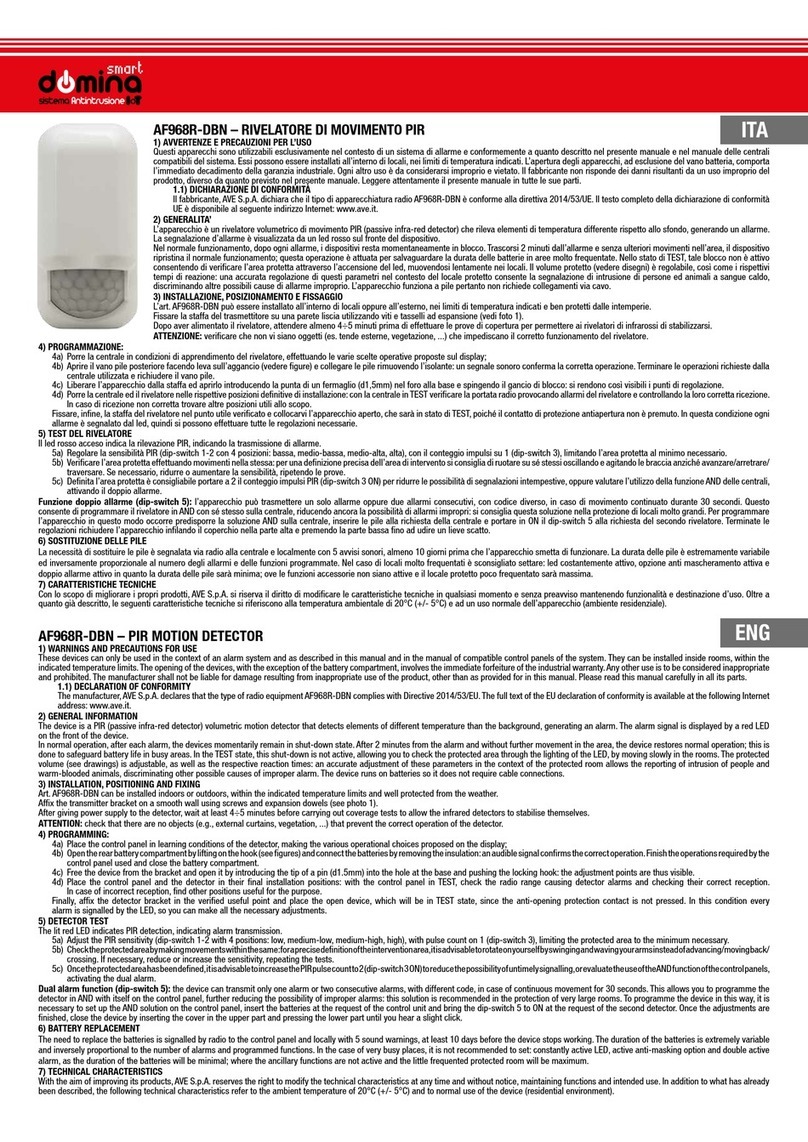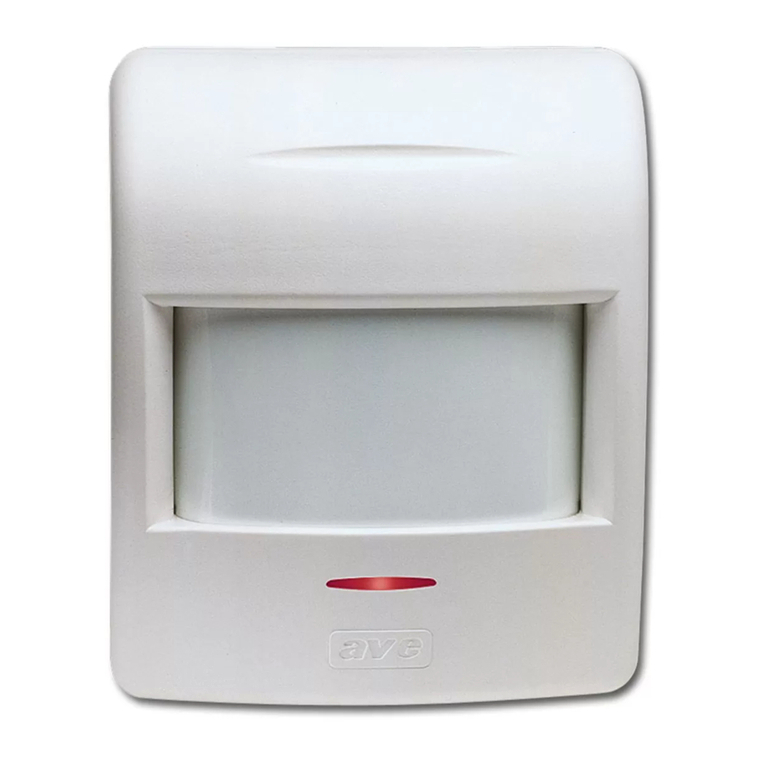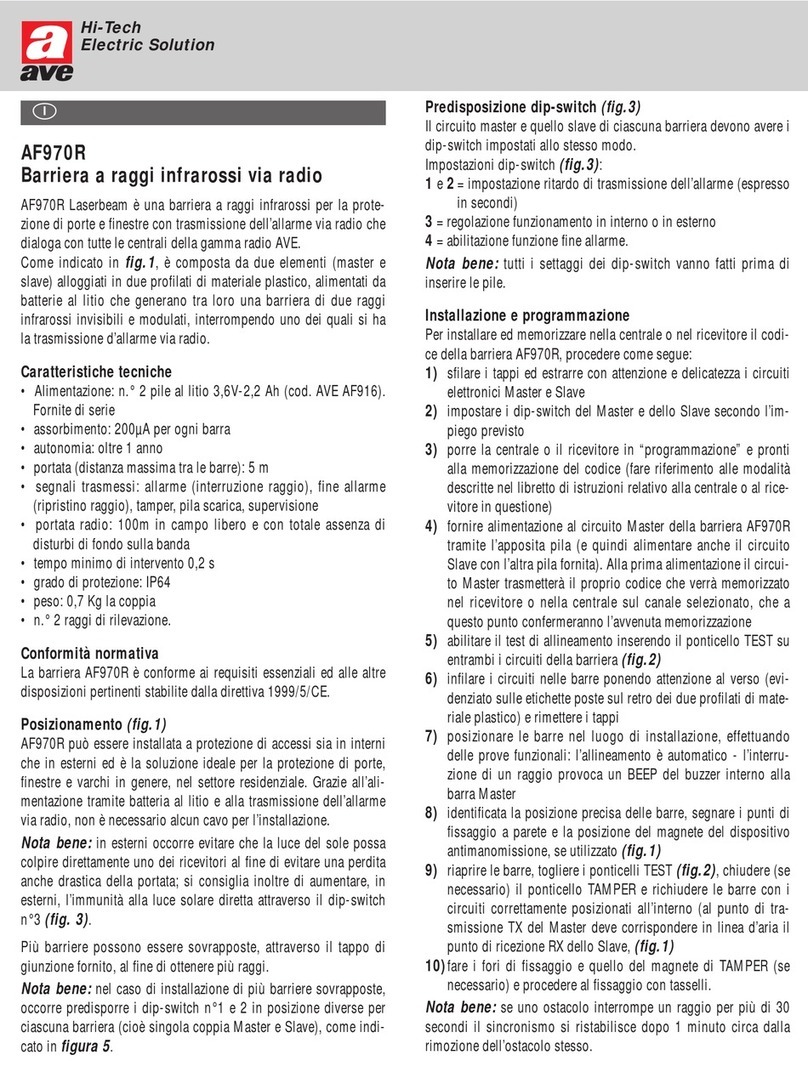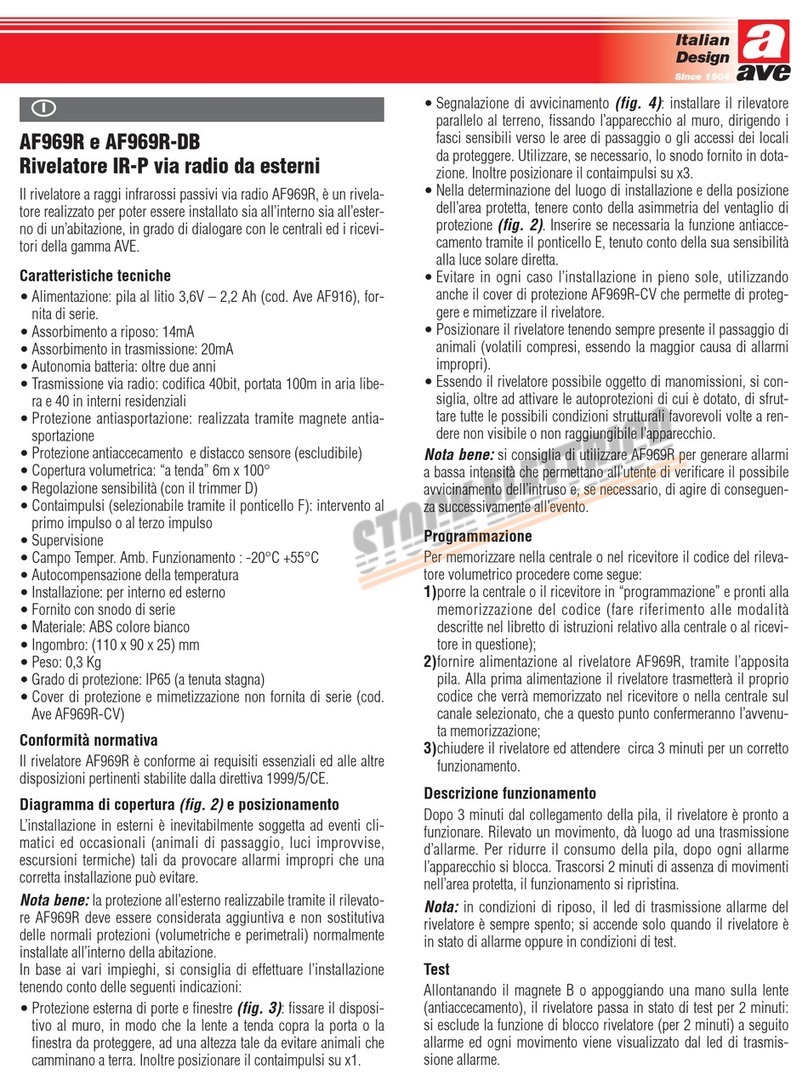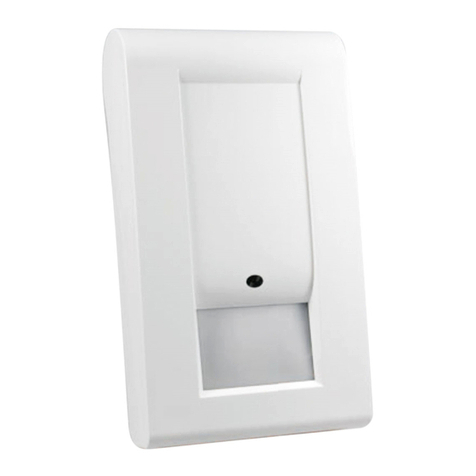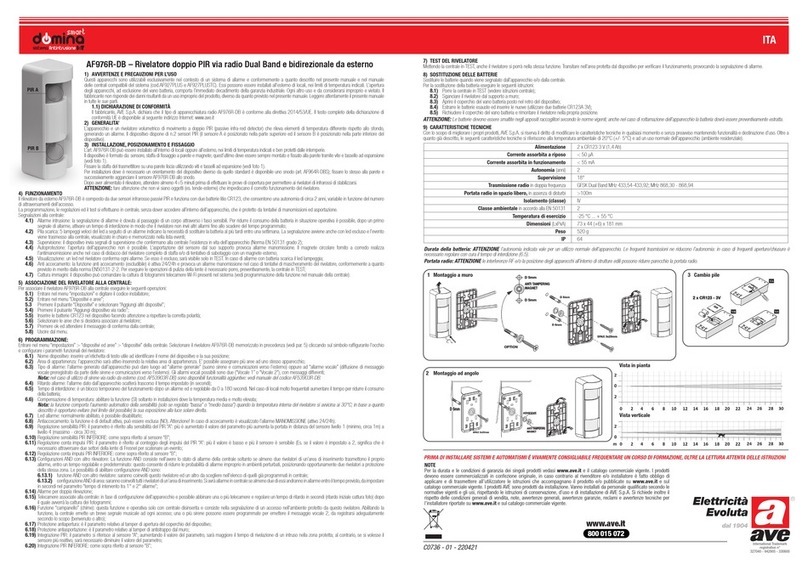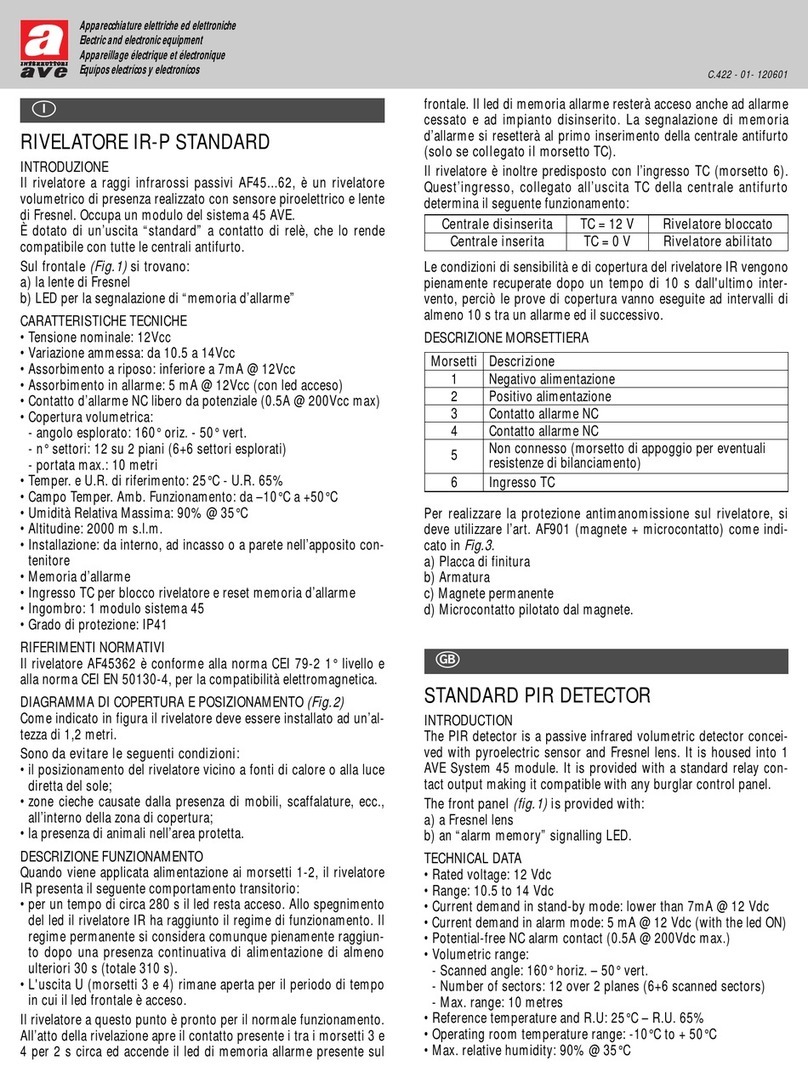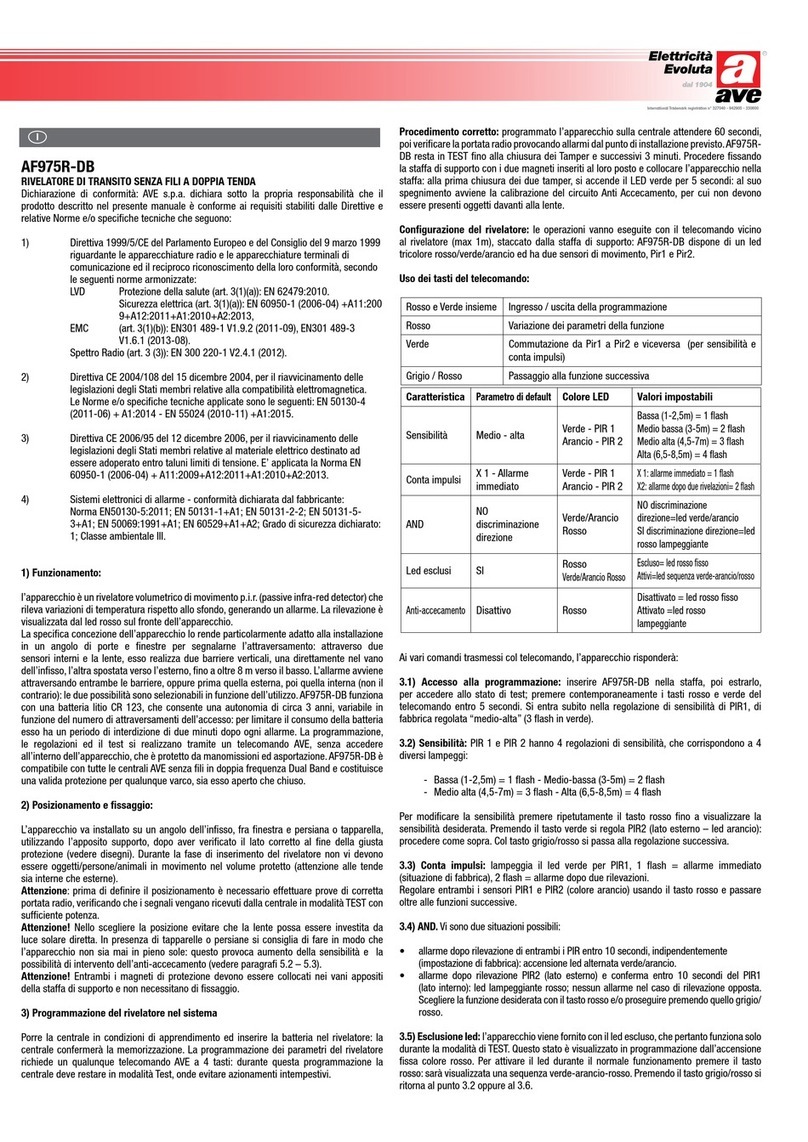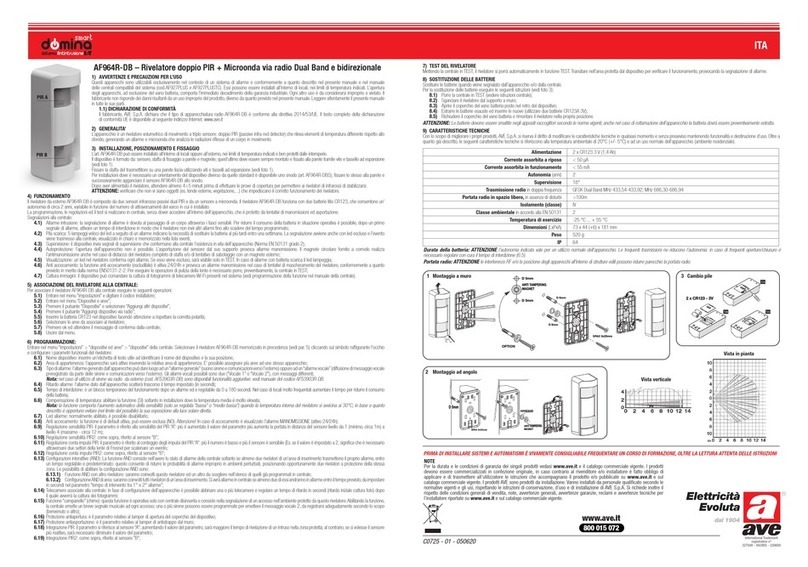
2
- EMC (art. 3(1)(b)): EN 301 489-1 V1.8.1 (2008-04), EN 301 489-3 V1.4.1 (2002-08), EN
301 489-7 V1.3.1 (2005-11)
- Spettro radio (art. 3(2)): EN 300 220-1 V2.1.1 (2006-04), EN 300 220-2 V2.1.2 (2007-06)
In accordo alla direttiva citata, allegato IV, il prodotto risulta di classe 4 pertanto può
essere commercializzato e messo in servizio senza limitazioni..
2) Direttiva CE 2004/108 del 15 dicembre 2004, per il riavvicinamento delle legislazioni
degli Stati membri relative alla compatibilità elettromagnetica. Le Norme e/o specifiche
tecniche applicate sono le seguenti: EN 50130-4 (1995-12) + A1 (1998-04) + A2 (2003-01)
- EN 55024 (1998-09) +A1 (2001-10) + A2 (2003-01) - EN 301489-1 V1.8.1(2008-04) - EN
301489-3 V. 1.4.1 (2002-08) - EN 301489-7 V1.3.1 (2005-11)
3) Direttiva CE 2006/95 del 12 dicembre 2006, per il riavvicinamento delle legislazioni
degli Stati membri relative al materiale elettrico destinato ad essere adoperato entro taluni
limiti di tensione. E' applicata la Norma EN 60950-1 (2006-049).
Prodotto conforme alla norma EN 50131-1 - Classe ambientale 4 - Prodotto di categoria I
secondo la Norma 300.220 - 1 (04/2006)
2.FUNZIONAMENTO
a) Generalità:l'apparecchio funziona con 3 pile alcaline tipo AA e trasmette l’allarme via
radio, quindi non richiede fili di collegamento. La parte PIR dell’apparecchio è sempre in
funzione ed attiva la parte MW in caso di rilevazione di intrusione: la conferma Doppler
dell’esistenza di una massa in movimento nell’area genera lo stato di allarme. La
sequenza di rilevazione è visualizzata dal led sul fronte dell’apparecchio, che cambia
colore (verde-arancio-rosso) nei vari passaggi. Programmando due trasmissioni di allarme
successive con codice differente si può utilizzare la funzione AND della centrale.
Blocco per la riduzione del consumo: dopo ogni allarme (o dopo due) l’apparecchio resta
in momentaneo blocco, che si ripristina trascorsi 2 minuti di assenza totale di movimenti
nell’area. Questo per ridurre il consumo delle pile in aree molto frequentate.
b) Doppia segnalazione di allarme: utilizzando l’apparecchio con centrali radio e
radio/filo AVE si può sfruttare la funzione AND. Attraverso il dip-switch 5 si ottiene che il
rivelatore trasmette il primo allarme con un codice ed un eventuale secondo allarme, che
avvenga entro 45 secondi, con un codice diverso. Programmando quindi il rivelatore sulla
centrale come fossero due in AND, si ottiene che l’allarme vero e proprio scatterà solo in
caso di doppia trasmissione del rivelatore (vedi punto 3a per la programmazione).
c) Regolazioni: la parte PIR può essere regolata in "sensibilità" (RANGE) e in conteggio
di impulsi (PULSE COUNT), che costituisce in sostanza un ritardo di intervento. Quella
MW si regola in "sensibilità (RANGE) ed integrazione (DELAY), che è il tempo minimo di
durata del movimento rilevato al fine dell'allarme.
d) Protezione antiasportazione: un apposito magnete, da fissare al muro nel punto
previsto sulla staffa scorrevole, consente la protezione antiasportazione. Quando il
rivelatore è correttamente collocato sulla staffa tale magnete chiude uno dei tre contatti
posti all’interno dell’apparecchio: lo slittamento verso l’alto o il basso e/o il distacco
dell’apparecchio dal muro provoca un allarme “manomissione” ed il successivo stato di
“test”. Nel caso di installazione del rivelatore con staffe o snodo accessorio occorre
comunque che il agnete sia correttamente posizionato (vedere disegni) onde consentire il
TEST, oltreché realizzare la protezione.
e) Protezione antiapertura:aprendo l'apparecchio alimentato un apposito pulsante
comanda la trasmissione di manomissione indipendentemente dalla condizione del
magnete antiasportazione.
f) Condizioni di prova dell'apparecchio (TEST): AF974R-DB si pone in TEST quando viene
rimosso dalla sua slitta, dietro la quale è collocato il magnete solidale con la superficie di
fissaggio: ciò provoca allarme manomissione, quindi sarà necessario porre







